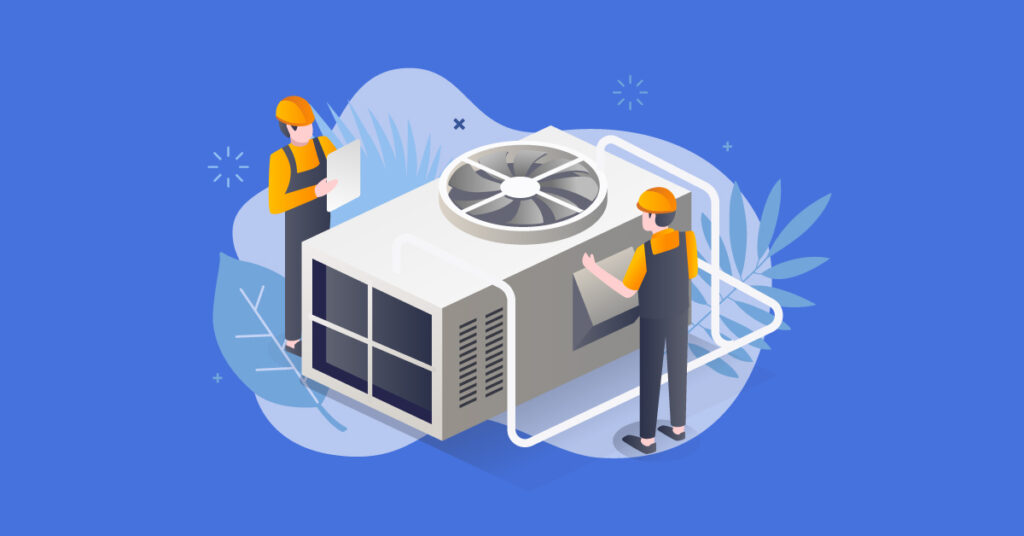Replacing dirty HVAC filters every three to four months should be part of any homeowner’s maintenance plan if their home is heated and cooled by an HVAC system. Dirty HVAC air filters reduce airflow throughout the home, increase energy bills and lead to malfunctioning HVAC components. If you have put off changing your HVAC filter because you think it’s too difficult, keep reading to find out how easy it is to change an HVAC filter today.
To HEPA or Not To HEPA?
Using high-efficiency particulate air (HEPA) filters in your HVAC system offers advantages and disadvantages. Pleated HEPA filters made of fibrous fiberglass or polypropylene work well to trap particles such as dust mites, pet dander, pollen and house dust. People with asthma, allergies or other respiratory conditions benefit the most from HEPA filters.
Disadvantages of HEPA filters include:
- Won’t remove bacteria, viruses and other contaminants smaller than 0.3 microns from the air
- Need to be replaced more frequently than standard filters
- Don’t work with all HVAC systems
If you are interested in using a HEPA filter in your HVAC system, call an HVAC technician to determine if your system is compatible with this filter.
How to Change an HVAC Filter Without Pulling Your Hair Out

Start out by turning the HVAC system OFF and locating the filter.
Where Is the Filter Located?
Typically, you can find HVAC filter in one of the following positions:
- Beneath a grate close to the floorboards
- Beneath a grate in your ceiling
- Behind a panel inside the unit
- At the bottom of the HVAC system
(Hint: you should be able to see ductwork coming in and out of the panel. Most HVAC filters are situated between ductwork receiving incoming air and the system itself)
How Do I Remove the Filter?
- Gently pull out the filter from inside the panel, or:
- Remove screws if the panel is attached with screws
(Hint: put screws in a plastic baggie, so you don’t lose them)
Should I Replace or Clean the Filter?
If you haven’t replaced the filter for more than three months, throw it away and replace it with a new one, even if it doesn’t appear that dirty.
Depending on your home environment (pets, smokers, humid weather, etc.), you might consider changing your HVAC filters more frequently to prevent poor air quality or higher than necessary energy bills. If you don’t have a permanent HVAC filter, replacing it is recommended over cleaning it.
How Do You Clean a Permanent HVAC Filter?
You might have a permanent HVAC filter that doesn’t need replacing. Cleaning a permanent filter involves:
- Spraying the filter outside with your garden hose or spraying the filter with a removable showerhead
- Gently scrub filters with mild soap and a soft brush if dirt can’t be removed with just water
Avoid spraying the filter at full blast. The force of the water could damage fibers meant to trap pollutants. Allow wet filters to dry completely before inserting them back into your HVAC system.
How Do I Insert a New or Cleaned HVAC Air Filter?
Look for an arrow on the new filter. The arrow should face away from the return air ducts and towards the unit. Or another way of putting it is to make sure the filter arrow (or arrows) face a wall or ceiling, depending on whether you have a ceiling filter or a wall filter.
If you can’t find an arrow on your new HVAC filter, try looking at the sides of the filter. Whichever side has a wireframe is the side that needs to be facing outward. The side that doesn’t have a wireframe will be inside and closer to the unit.
All that’s left to do is to close access panels and turn your HVAC back on. Now that you know how to change an HVAC filter, you shouldn’t hesitate to replace the old one every three months. Your HVAC will love you for it!
HVAC Filter Changing Tips
Wear a mask and gloves if you are sensitive to pollen, dust, and other airborne debris while changing and replacing a filter. Clean out excess dirt in an HVAC unit using a small shop vac or another similar device
Take the old HVAC filter with you when you purchase another one to ensure you buy the correct filter. Or, you’ll find the manufacturer’s specifications on your old filter that you can use when buying a new one. Or, you can rely on the model number and brand of your HVAC unit to find the right filter.
If possible, use only HVAC filters with higher MERV ratings. MERV is the acronym for Minimum Efficiency Reporting Value, a standard value system used to indicate how well the filter removes particulates from incoming air. Although filters with MERV ratings between 13 and 16 may slightly increase your energy bill, they can remove over 75 percent of particulates that are 0.30 to 1.0 microns in size.
HVACs with electronic media filters do not need their filter replaced every three months. Replacing an electronic media filter every six months is acceptable, as long as a home’s environment isn’t overloaded with particulates. However, it’s likely you won’t find an electronic media filter replacement at your local hardware store. Just visit the website of your HVAC brand and purchase the filter directly from the company.
You might also be interested in: How Long Do HVAC Systems Last? [Everything You Need To Know]




